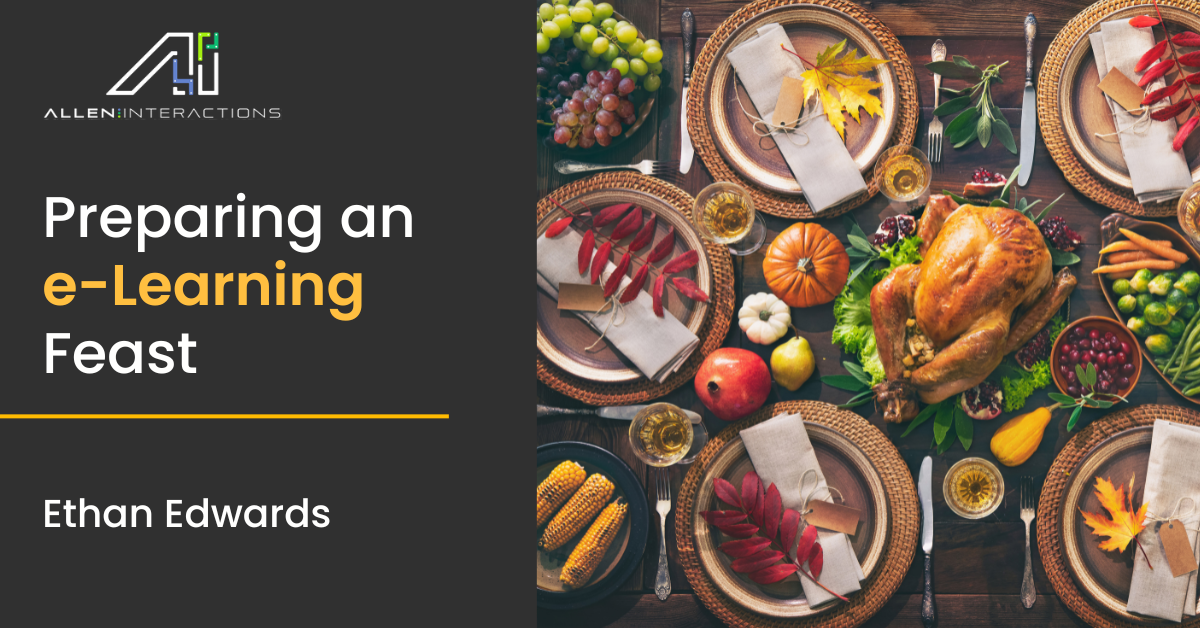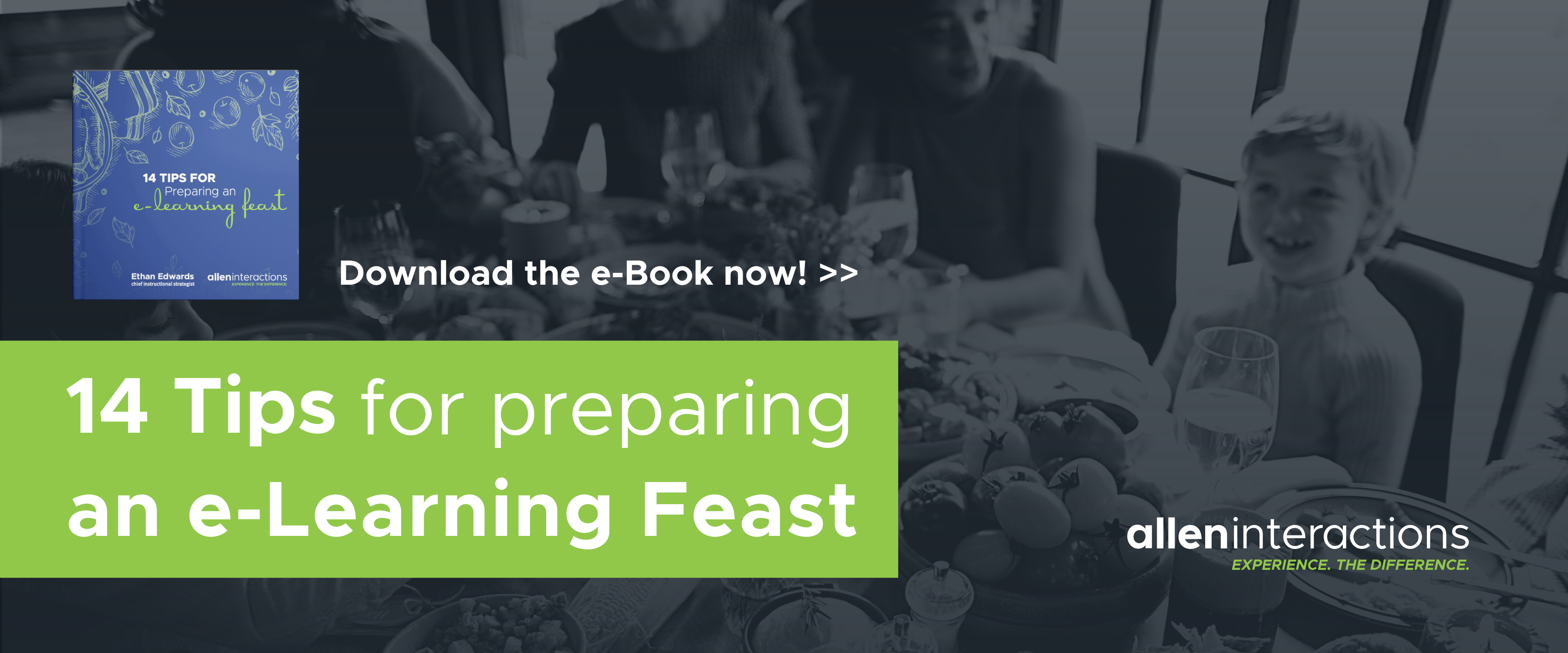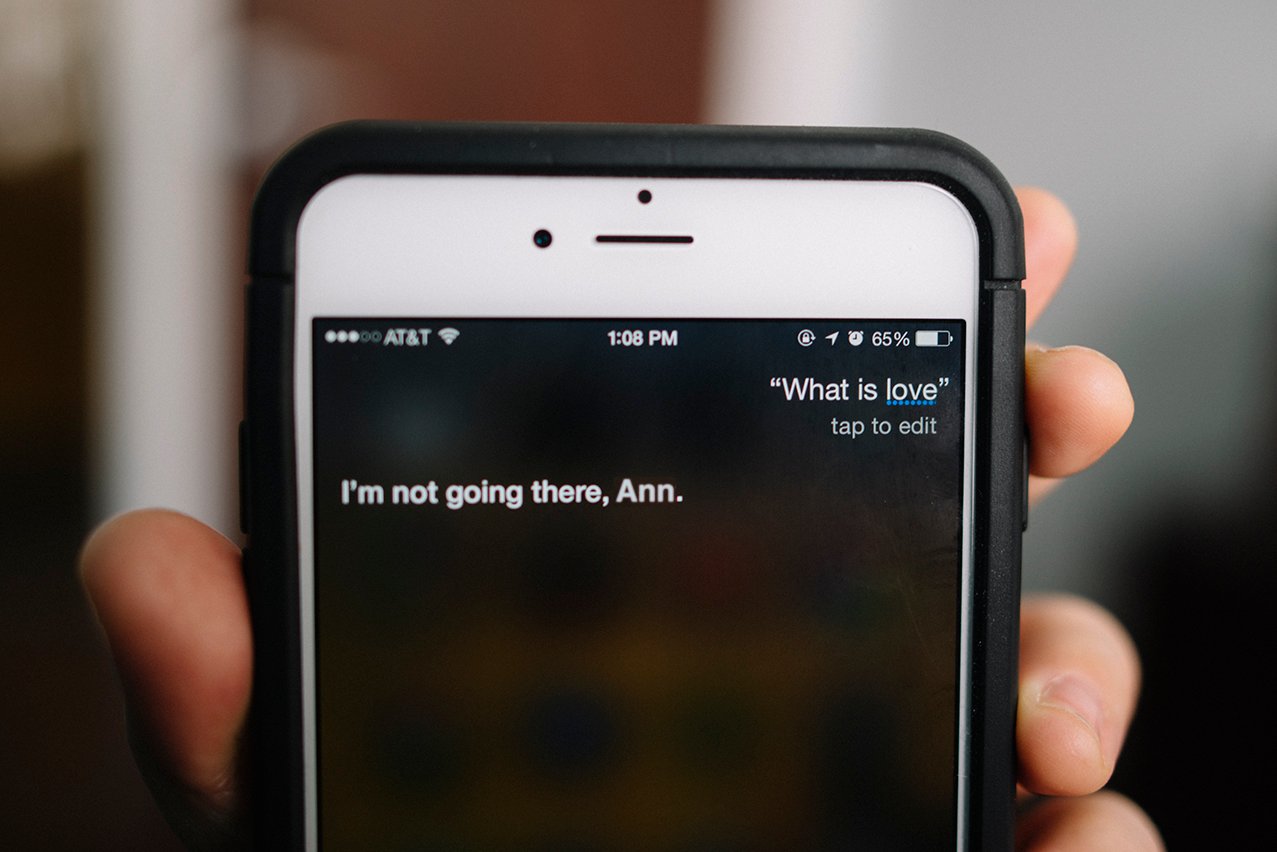Getting ready for your big feast this week? As we return to our families and friends for a great meal, catching up on years of conversations we may have missed, and spending time with our loved ones, we've got some great tips for your e-learning that go beyond the dinner table. There's not much time left to prepare, so let's go!
Plan ahead
People so often underestimate what it takes to put together a piece of e-learning. Before you begin, create a realistic timeline, plan for how you’ll have the right resources in place, and conduct a thorough analysis. When it comes to thawing that turkey, now is not the time to take chances! Last-minute changes, shortcuts, and substitutions almost always end up costing more and resulting in an inferior end product.
Check the guest list
Be mindful of your learners. Try to find out as much as you can about them. Understand what they like, where they are coming from, how long they will study, and what they don’t like. This doesn’t mean you shouldn’t push your learners in new directions, but it will help you be most successful in creating a satisfying learning experience.
Pick the right sized turkey
Tradition suggests that big is always better. From experience we know that isn’t true but it is so easy to fall into the trap. Don’t try to prepare as much content as you possibly can and then be surprised that it’s more than learners can process.
Embrace grazing
Our guests may not have the stomach to go for the whole meal at once, and that's okay. Likewise, with our learning, sometimes a very small, focused bit of instruction is actually a lot more satisfying than a comprehensive all-encompassing curriculum. There’s a lot of evidence that smaller bits of learning spread evenly over time are more effective than the same content presented at once.
Don’t overstuff the bird
Many good learning opportunities are squandered simply because too much content is forced into a learning situation that can’t support it. A learner can only process, practice, and review a limited amount of information in a single session. Even though the mechanics of an e-learning structure can hold an enormous quantity of content, it is easy to overwhelm the learner with so much content that none of it has a lasting impact.
Don’t be surprised when no one eats the brussels sprouts
The more e-learning you create, the more you’ll know what works with your learners and what doesn’t—but only if you actually pay attention to them. It is easy to keep on doing what we’ve been told to do even when we know that no one’s buying it.
For example, a hallmark of many designs is to start with a screen listing the objectives. We know that communicating objectives enhances learning. But that can’t happen if the learner doesn’t bother to read them. This doesn’t mean eliminating objectives; rather it means figuring out how to communicate them in a way that learners actually comprehend. Substitutions almost always end up costing more and result in a lesser experience.
You don't have to follow the same recipe
So many people build e-learning by just recreating what they’ve seen others do: list the objectives, give a pre-test, deliver content, insert knowledge checks, display a summary, and deliver a post-test. It’s a perfectly functional structure, but it isn’t particularly good. In fact, it's utterly forgettable.
With each e-learning project, push yourself to make sure that each element is there because it serves a specific purpose, not simply to implement it because it’s something the organization has always done.
Go easy on the marshmallows on the sweet potatoes
Don’t decide your content is boring and the only way to make it palatable is to hide it behind elements of no lasting value like superficial animations, misapplied media, or irrelevant distractions. Too often designers completely derail the real value of the content and distract the learner with elements that draw attention but actually make it harder to grow meaningfully.
Try something unexpected
Don’t be afraid to think outside the box and try something new that might enhance motivation, increase engagement, and broaden the learner’s expectations. Everything might not always work the first time, but it’s necessary to introduce variety and delight into your e-learning.
Experience matters. Before learners read a single word of content in an e-learning* piece, they’ve already judged the experience they’re starting based on immediate first impressions. The look, feel, and visual appeal of the context surrounding the instruction can be invaluable in creating the conditions for effective learning to occur.
Use your leftovers
Too often designers plan an e-learning lesson and make no accommodations for how the learner is going to benefit from the lesson moving forward. Don’t be afraid to create takeaways, such as workbooks or performance support documents that learners can use after the e-learning is complete. Or follow up with a second short review module (or even simple email challenges) a couple of days later to extend the impact of the experience. Your learners will thank you for it.
-1.png?width=75&height=75&name=Copy%20of%20It%20is%20not%20the%20strongest%20of%20the%20species%20that%20survive%2c%20nor%20the%20most%20intelligent%2c%20but%20the%20one%20most%20responsive%20to%20change%E2%80%99%20(11)-1.png)


.png)



Comment